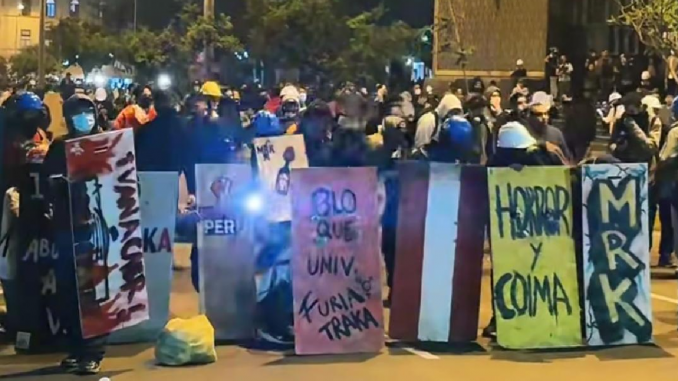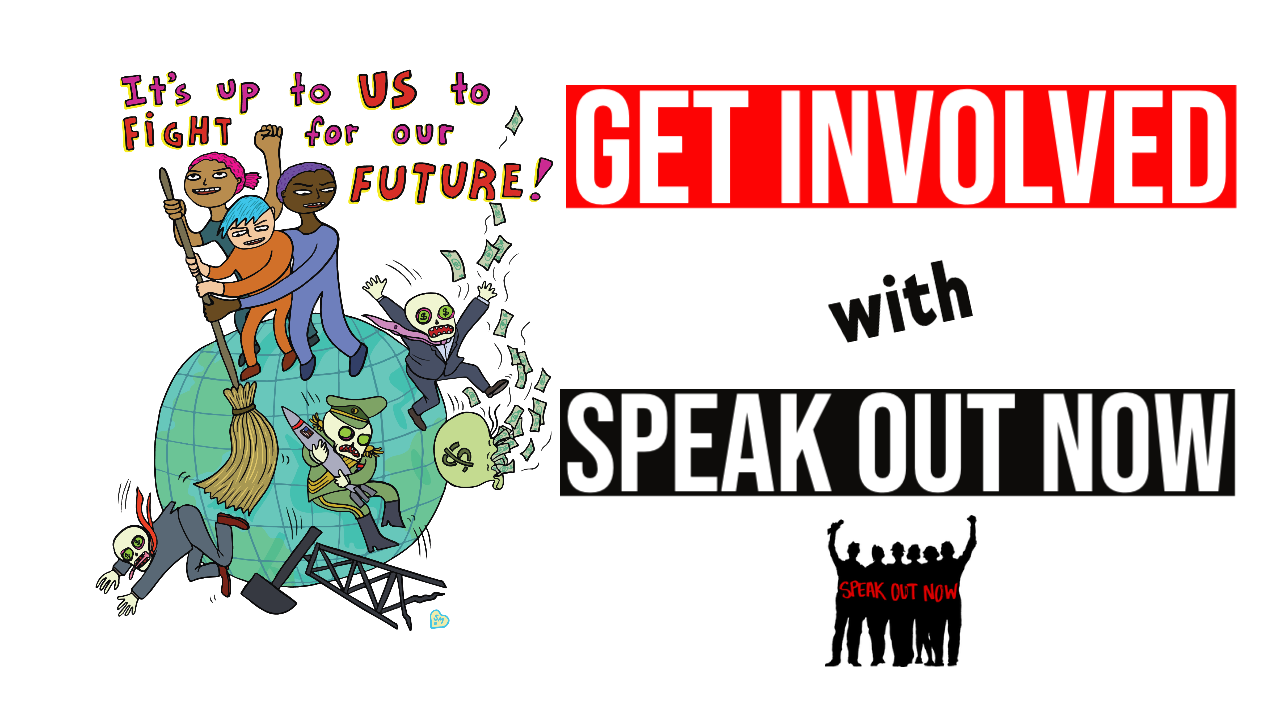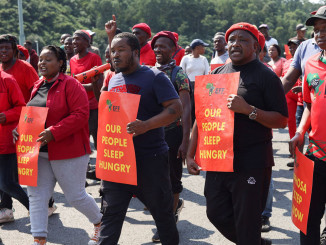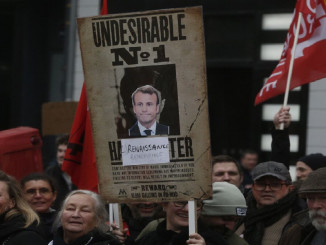
October 19, 2025 article published by the New Anticapitalist Party-Revolutionaries (NPA-R) in France, translated from French. Three days after this article was published, the new president of Peru implemented a state of emergency in the largest cities, sending in the military to patrol and banning freedom of speech and assembly.
In Peru, after several weeks of social unrest, the removal of former President Dina Boluarte by Congress has failed to calm popular discontent.
On Wednesday, October 15, tens of thousands of protesters took to the streets of the capital Lima, as well as Cuzco, Arequipa, and Puno in the south, and Trujillo and Piura on the north coast, marking a new stage in the social unrest that has been gripping Peru since early September. In the wake of social unrest in Nepal and Madagascar, Peru’s “Generación Zeta” (“Gen Z”), which sees little future in a society where hunger and poverty reign among the working classes and where the ruling mafia coalition is organizing the purchase of the next elections, has also taken up the One Piece flag.
The first demonstrations in mid-September brought together several thousand young people and informal workers in Lima to protest against a highly unpopular pension reform bill that introduced a new pension fund system (AFP). This mobilization, and the shadow of the Nepalese parliament set on fire a few days earlier, were enough to shake and push back the government of Dina Boluarte1.
But the Peruvian bourgeoisie had to face a second threat, the convergence of which it feared: the anger of bus drivers and fare collectors, exasperated by a crisis of insecurity that particularly affects them. Extortion is becoming increasingly widespread, with criminal gangs racketeering bus and motorcycle taxi drivers on a daily basis and not hesitating to murder those who resist: in 2025 alone, 55 bus drivers lost their lives in this way. Transport operators have been mobilizing since September 2024 in sporadic but regular strikes. They stepped up their efforts on Monday, October 6. Lima, the capital, a metropolis of 13 million inhabitants where normal road traffic is already incredibly chaotic, was then besieged by transport operators from the “conos,” the poor neighborhoods that border the city center (similar to the ‘villas’ in Argentina or the “favelas” in Brazil). Following yet another murder, transport workers blocked the main roads. The police tried to break up the barricades, but failed in the face of the transport workers’ determination. “I’d rather die on the barricades than die like a dog,” said one striker. Some continued the next day, before the unions called for the barricades to be lifted for good. Within a day, the police had lost control of the capital. They had been “defeated,” the newspapers acknowledged.
Something had to be done to try to calm the popular anger, and the bourgeoisie did not hesitate for long before abandoning the president. And although the shooting that took place during a concert by the band Agua Marina on October 8 served as a pretext for Dina Boluarte’s dismissal, it is undeniable that the scale of the transporters’ mobilization, and the social unrest it reflects, played a part.
Until then, Dina Boluarte had been protected from numerous motions of censure by the opposition thanks to the support of the “Fujimorist” party Forza Popular, a far-right gangster coalition led by Keiko Fujimori, heir to her father Alberto Fujimori, who established a military dictatorship in the 1990s. Controlling the media and entire sectors of the economy, the clan also controls most of the political parties, whose various names are merely different labels for the same policy. But the president enjoyed only 2.5% approval ratings among the population.
She was hated for stabbing Pedro Castillo, her vice president, in the back. Castillo was accused of attempted coup and corruption in late 2022, impeached, then arrested and imprisoned. She was hated for ordering the killing of more than 50 protesters who were demonstrating against the ouster of the only president of Andean origin to ever govern a country. She was hated for her jewelry, symbols of well-known corruption, which she displayed unabashedly. She was hated for passing dozens of laws (82 in total) that further reduced the independence of the judiciary and the power of the justice system over organized crime. While criminal gangs thrive, often in cahoots with a corrupt state apparatus, Dina Boluarte was quick to blame illegal immigration for the insecurity, following a well-known recipe in all corners of the world… Finally, she was hated for granting amnesty to the warmongers who had reveled in the massacres during the armed conflict that pitted the state against the Maoist organization Shining Path in the 1990s.
The movement persists
By playing the impeachment card, Congress hoped to calm social unrest. It is clear that this did not work. It must be said that the new interim president, José Jerí, until then president of Parliament, also has a number of skeletons in his closet. He, who became abnormally wealthy in just a few years in power, is also accused of rape (a complaint recently dismissed) and has distinguished himself with numerous sexist and vulgar tweets. Among those that GenZ has not failed to find, let us note this one, which shows the character’s class: “Good women are seduced by love, tenderness, and respect. For all the others, there’s Mastercard.”
Even before the change in leadership, GenZ organizers had set a date for a demonstration on Wednesday, October 15, in conjunction with transport leaders. It was to be the first time the two movements would meet.
But the transport unions that had committed to participating gave in to pressure from the new government and withdrew their calls for strikes and demonstrations, even the most militant ones.
At the same time, the murders of transport workers have stopped: not one death since Jerí came to power. Is this a coincidence, proof of the new president’s authority, or proof, on the contrary, that the bandits in power are linked to those who extort money on a daily basis from women and men who work 10, 12, or 14 hours a day?
In any case, even though transport workers did not participate en masse in the October 15 protest, the message continues to circulate that the next death will be the signal for an indefinite strike.
And despite the absence of transport workers, tens of thousands of people thwarted the parliament’s political maneuver: young people, informal workers, street vendors, indigenous peoples who are often looked down on, all showed up. There were between 20,000 and 30,000 people in Lima, whereas previous demonstrations had not exceeded 10,000. The clashes were violent, with the police confronting demonstrators with tear gas, buckshot, and live ammunition, leaving several people injured and one dead, a 32-year-old rapper and activist in a cultural collective.
Next steps
After the failure of the political coup, the government took a turn toward authoritarianism by declaring a state of emergency in Lima (which removes the constitutional rights of the population and restricts, in particular, the rights of movement and assembly) and leaving open the possibility of imposing a curfew.
It stigmatized the protesters by likening them to the “terrorism” of the Shining Path, whose actions, like those of the state at the time, traumatized the country. Some voices are suggesting a possible takeover by the army, an option recently chosen in Nepal and Madagascar, which would not be unwelcome to the United States, keen to bring order to Latin America, starting with stifling its Venezuelan neighbor.
But the anger has not subsided, quite the contrary. The political problem remains unresolved and discontent is very high in Lima and throughout the country. It is becoming increasingly clear that the state is defending the ruling clique against the working classes.
A new day of national strike and mobilization has been called for Monday, October 20.
– Louis Dracon and Sabine Beltrand
For further reading: see this article published in January 2023 in Convergences Révolutionnaires about the removal of Pedro Castillo and the popular uprising that followed.
- Elected in 2021 as vice president of Pedro Castillo’s left-wing government, she became president of Peru at the end of 2022 after Castillo’s removal from office, and immediately distinguished herself by fiercely repressing the wave of protests that followed, leaving around 50 people dead. She has since governed with the support of the most conservative coalitions. ↩︎




